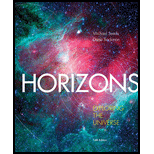
Horizons: Exploring the Universe (MindTap Course List)
14th Edition
ISBN: 9781305960961
Author: Michael A. Seeds, Dana Backman
Publisher: Cengage Learning
expand_more
expand_more
format_list_bulleted
Textbook Question
Chapter 1, Problem 2P
The diameter of the Moon across its equator is 3476 kilometers. If a kilometer equals 0.6214 miles, what is the Moon’s diameter in miles?
Expert Solution & Answer
Trending nowThis is a popular solution!

Students have asked these similar questions
The equatorial diameter of the Moon is3476 kilometers. If a kilometer equals 0.6214 miles, what is the Moon's diameter in miles
The actual average Earth–Moon distance is about 384,000 kilometers, and Earth’s diameter is about 12,800 kilometers. How many “Earth diameters” is the distance from Earth to the Moon?
The actual average earth-moon distance is about 384,000km, and earth's diameter is about 128,800km. how many earth diameters is the distance from earth-moon?
Chapter 1 Solutions
Horizons: Exploring the Universe (MindTap Course List)
Ch. 1 - What is the largest dimension of which you have...Ch. 1 - What is the difference between our Solar System,...Ch. 1 - Why are light-years more convenient than miles,...Ch. 1 - Why is it difficult to detect planets orbiting...Ch. 1 - Prob. 5RQCh. 1 - What is the difference between the Milky Way and...Ch. 1 - What are the largest known structures in the...Ch. 1 - Prob. 8RQCh. 1 - How Do We Know? How does the scientific method...Ch. 1 - You and three of your friends have won an...
Ch. 1 - Think back to the last time you got a new phone...Ch. 1 - The diameter of Earth across the equator is 7928...Ch. 1 - The diameter of the Moon across its equator is...Ch. 1 - One astronomical unit is about 1.50108 km. Explain...Ch. 1 - Venus orbits 0.72 AU from the Sun. What is that...Ch. 1 - Light from the Sun takes 8 minutes to reach Earth....Ch. 1 - The Sun is almost 400 times farther from Earth...Ch. 1 - If the speed of light is 3.00105 km/s. how many...Ch. 1 - How long does it take light to cross the diameter...Ch. 1 - The nearest large galaxy to our n is about 2.5...Ch. 1 - How many galaxies like our own would it take Laid...Ch. 1 - In Figure 1-4, the division between daylight and...Ch. 1 - Prob. 2LTLCh. 1 - Prob. 3LTLCh. 1 - Prob. 4LTL
Knowledge Booster
Learn more about
Need a deep-dive on the concept behind this application? Look no further. Learn more about this topic, physics and related others by exploring similar questions and additional content below.Similar questions
- If a person weighs 160 lb on the Earth, then what is the persons weight (in pounds) on the Moon?arrow_forwardcompared with the diameter of earth's moon, the diameter of Mercury isarrow_forwardWhat would be the angular diameter of the Moon if to distance between the Moon and the Earth were twice bigger?arrow_forward
- The mean radius of earth is 6,371.0 kilometers and the mean radius of earths moon is 1,737.5 kilometers. What is the approximate difference in the mean conferences, in kilometers, of earth and earths moon? Round your answer to the nearest tenth of a kilometer.arrow_forwardThe moon has a mass of 7.34x10²² kg and a radius of 1.74x10⁶meters. If you have a mass of 66 kg, how strong is the force between you and the moon?arrow_forwardSuppose a Moon takes 15.8 days to orbit its host planet. Convert this orbital period into Earth years (365.25 =1 Earth year). a. 0.0431-0.0435 b. 0.0331-0.0335 c. 0.0231-0.0235 d. 0.0131-0.0135arrow_forward
- The moon is about 3.8 × 10^5 km from Earth. How many centimeters is this? One km = 100,000 cm. Write your answer in scientific notationarrow_forwardSuppose you were given a 3 in diameter ball to represent the Earth and a 1 in diameter ball to represent the Moon. (The actual ratio of Earth diameter to Moon diameter is 3.7 to 1.) The actual average Earth–Moon distance is about 384,000 kilometers, and Earth’s diameter is about 12,800 kilometers. How many “Earth diameters” is the distance from Earth to the Moon? Based on your answer to Question 2, what is the correct scaled distance of the Moon, using the 3-inch ball as Earth? The Sun’s actual diameter is about 1,400,000 kilometers. How many “Earth diameters” is this? Given your 3-inch Earth, how large (i.e what diameter) of a ball would you need to represent the Sun? Give your answer in feet. The average Earth–Sun distance is about 149,600,000 km. To represent this distance to scale, how far away would you have to place your 3-inch Earth from your Sun? Give your answer in feet. Could we use this scale to visualize the solar system instead of just the Earth and Moon? Why or Why…arrow_forwardThe Hubble Space Telescope has a resolution of about 0.05 arc second. What is the smallest object it could see on the surface of the Moon? Give your answer in meters.arrow_forward
- Relative to the stars, the moon moves about ___________ eastward in the sky each night. a. 1° b. 5° c. 13° d. 27.3° e. 29.5°arrow_forwardWhat is the difference between the Moon and a moon?arrow_forwardHow many degrees does the Moon move per day relative to the fixed stars? How many days does it take for the Moon to return to its original location relative to the fixed stars?arrow_forward
arrow_back_ios
SEE MORE QUESTIONS
arrow_forward_ios
Recommended textbooks for you
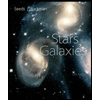 Stars and Galaxies (MindTap Course List)PhysicsISBN:9781337399944Author:Michael A. SeedsPublisher:Cengage Learning
Stars and Galaxies (MindTap Course List)PhysicsISBN:9781337399944Author:Michael A. SeedsPublisher:Cengage Learning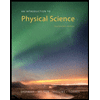 An Introduction to Physical SciencePhysicsISBN:9781305079137Author:James Shipman, Jerry D. Wilson, Charles A. Higgins, Omar TorresPublisher:Cengage Learning
An Introduction to Physical SciencePhysicsISBN:9781305079137Author:James Shipman, Jerry D. Wilson, Charles A. Higgins, Omar TorresPublisher:Cengage Learning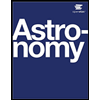 AstronomyPhysicsISBN:9781938168284Author:Andrew Fraknoi; David Morrison; Sidney C. WolffPublisher:OpenStax
AstronomyPhysicsISBN:9781938168284Author:Andrew Fraknoi; David Morrison; Sidney C. WolffPublisher:OpenStax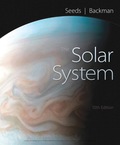
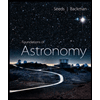 Foundations of Astronomy (MindTap Course List)PhysicsISBN:9781337399920Author:Michael A. Seeds, Dana BackmanPublisher:Cengage Learning
Foundations of Astronomy (MindTap Course List)PhysicsISBN:9781337399920Author:Michael A. Seeds, Dana BackmanPublisher:Cengage Learning

Stars and Galaxies (MindTap Course List)
Physics
ISBN:9781337399944
Author:Michael A. Seeds
Publisher:Cengage Learning

An Introduction to Physical Science
Physics
ISBN:9781305079137
Author:James Shipman, Jerry D. Wilson, Charles A. Higgins, Omar Torres
Publisher:Cengage Learning

Astronomy
Physics
ISBN:9781938168284
Author:Andrew Fraknoi; David Morrison; Sidney C. Wolff
Publisher:OpenStax


Foundations of Astronomy (MindTap Course List)
Physics
ISBN:9781337399920
Author:Michael A. Seeds, Dana Backman
Publisher:Cengage Learning
Time Dilation - Einstein's Theory Of Relativity Explained!; Author: Science ABC;https://www.youtube.com/watch?v=yuD34tEpRFw;License: Standard YouTube License, CC-BY